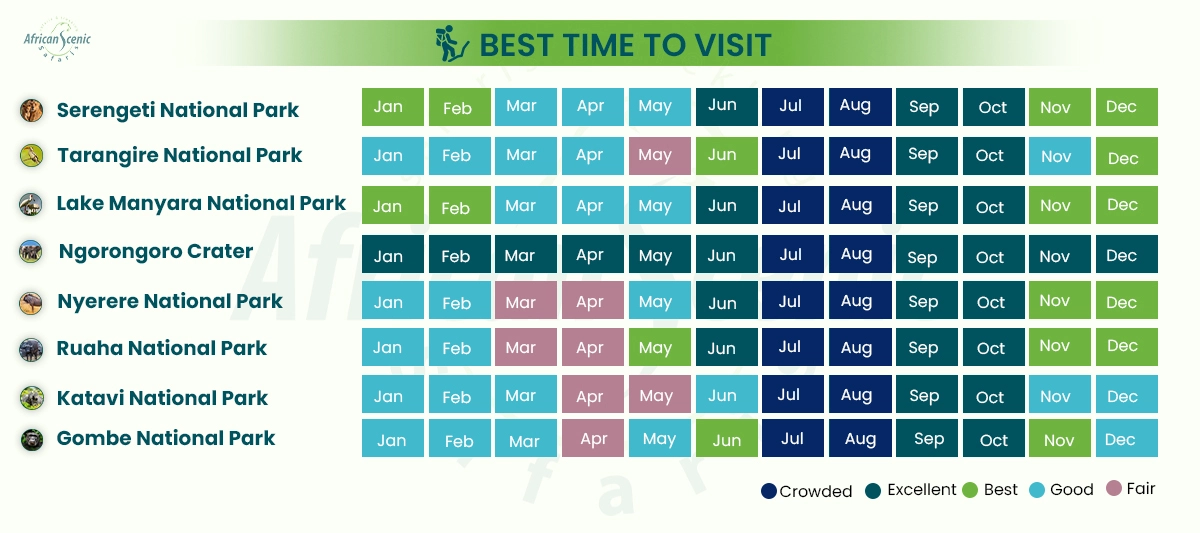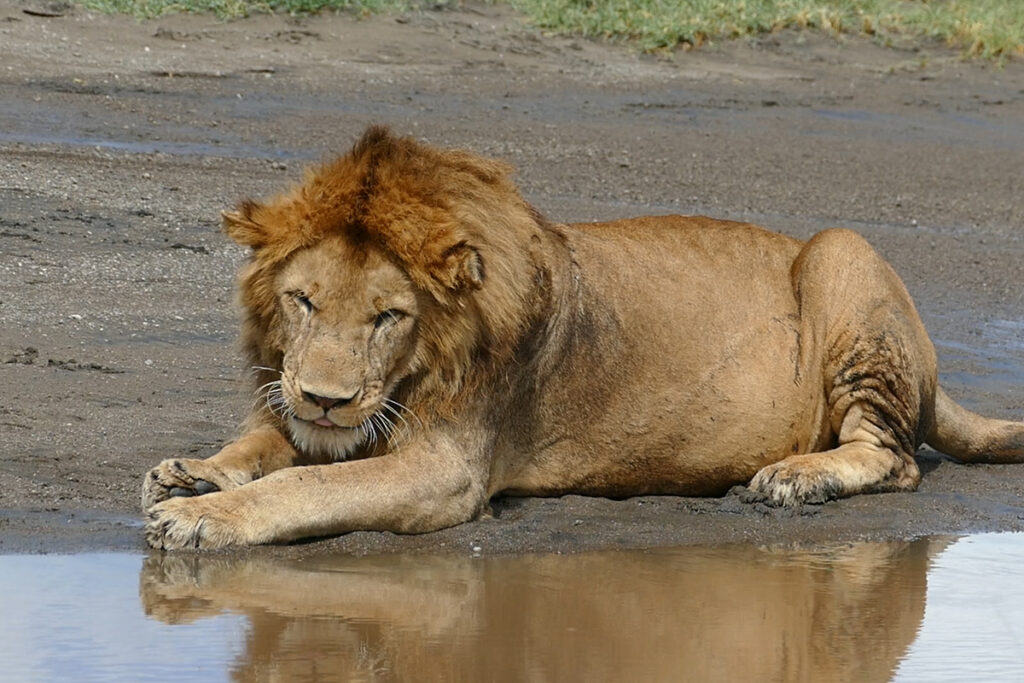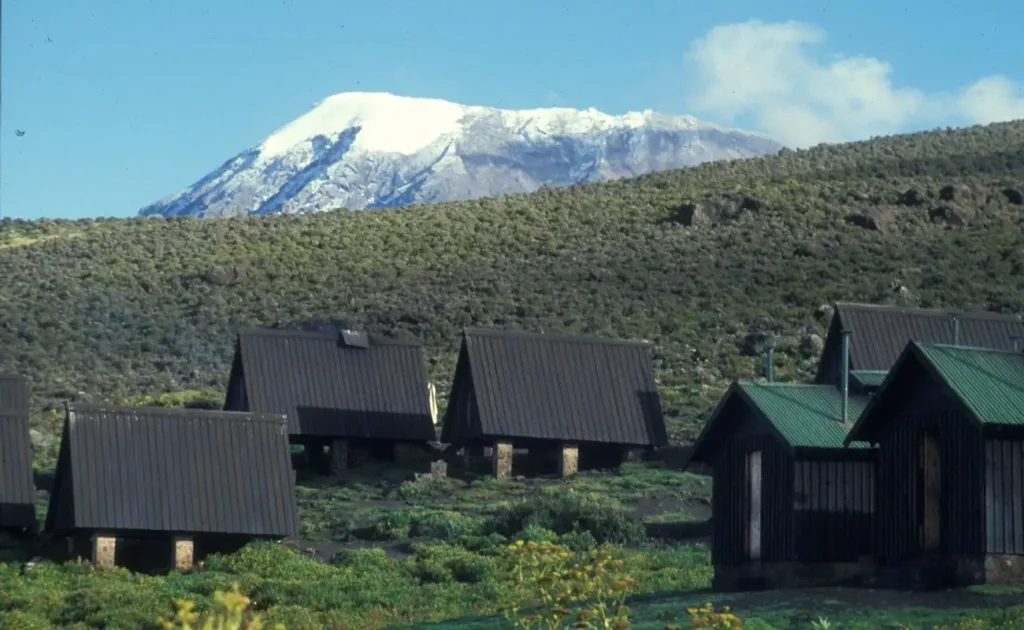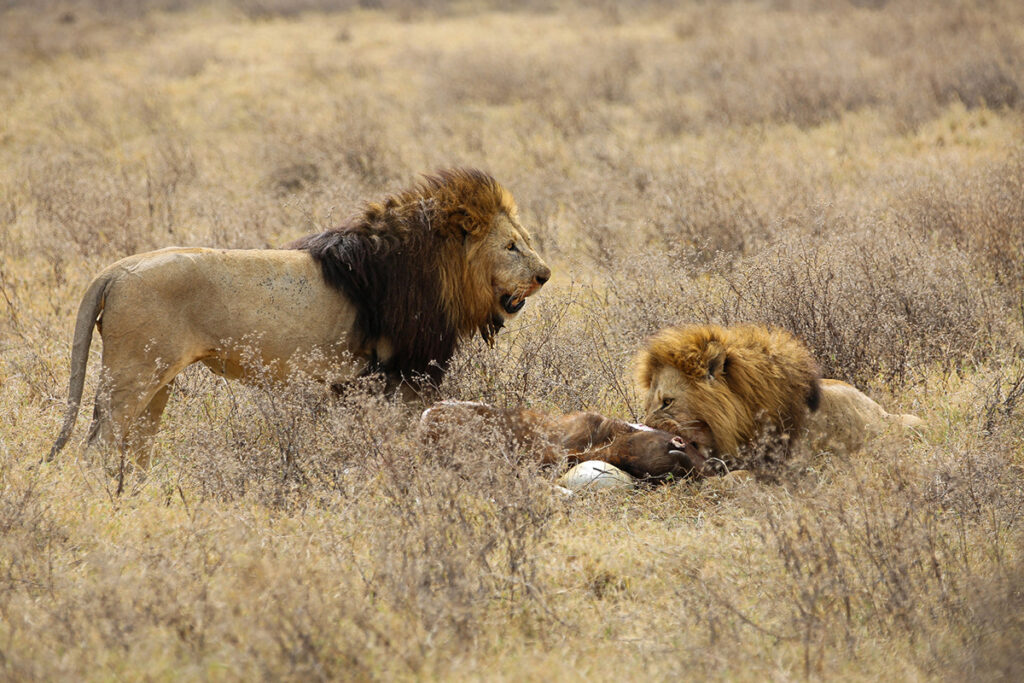Have you ever considered that the perfect time to witness the epic wildebeest migration in Tanzania’s Serengeti happens to be in the dry season? From late June to October, nature puts on a spectacle as millions of animals cross vast plains. It’s a unique experience that leaves a lasting imprint on every wildlife enthusiast.
Historically, the dry season has also presented the optimal conditions for safari adventures. With minimal rainfall, vegetation is thinner, making it easier to spot animals at watering holes. Statistically, visitor satisfaction peaks during these months, confirming their popularity and justifying the higher influx of tourists.

What is the best time to visit Tanzania?
Determining the best time to visit Tanzania hinges on what you wish to experience. The dry season, from late June to October, is ideal for safaris. During these months, the weather is pleasant and the wildlife gathers around water sources, making it easier to spot. Additionally, you can witness the Great Migration in the Serengeti, where millions of wildebeests and zebras travel across the plains. This period promises an unmatched wildlife spectacle.
If you prefer fewer crowds and lush landscapes, consider visiting during the wet season, from November to May. Though it’s wetter, the scenery is stunning, with blooming flowers and green vegetation. It’s also a great time for bird watching, as migratory birds arrive. Some might find it challenging to navigate muddy roads, but the breathtaking scenery often outweighs these inconveniences. However, remember that it can sometimes be hot and humid.
The shoulder seasons, which are the months in between the wet and dry seasons, can also offer a unique experience. In May and November, you can get the best of both worlds: fewer tourists, decent weather, and vibrant wildlife activity. During these months, travel costs tend to be lower, making it a budget-friendly option. It’s a perfect time for those who are flexible and wish to avoid peak tourist seasons.
Knowing the regional variations in Tanzania can also help plan your visit. Coastal areas like Zanzibar experience more consistent weather patterns year-round. For trek enthusiasts, climbing Mount Kilimanjaro is best from January to March or June to October. These months offer the clearest skies and ideal hiking conditions. So, whether it’s wildlife, beaches, or mountains, Tanzania has something for every traveler at different times of the year.
Understanding Weather Patterns in Tanzania
Tanzania’s weather varies greatly due to its diverse geography. The coastal regions, like Zanzibar, typically experience warm and humid conditions all year round. These areas enjoy temperatures between 25°C and 30°C. In contrast, the central plateau tends to have a more temperate climate. The highlands are cooler, especially during June and July nights.
Recognizing the two main seasons in Tanzania is essential: the dry season and the wet season. The dry season lasts from late June to October. During these months, the skies are clear, and the wildlife gathers around waterholes. The wet season is divided into the short rains from November to December and the long rains from March to May. Each season offers unique experiences for travelers.
Coastal and island regions have two rain seasons. The long rains fall from March to May and short rains in November and December. Upcountry areas are less affected by short rains, making them more predictable for travel.
The weather in Tanzania can also be influenced by the altitude. Areas like Mount Kilimanjaro experience colder temperatures and even snow at the peak. On the other hand, cities like Dar es Salaam and Dodoma can be extremely hot. Understanding these variations can help you pack appropriately and plan your activities. Visiting Sia Yangu Safaris’ website can provide further insights into the best times to embark on specific activities, ensuring a memorable adventure. Visit us at Sia Yangu Safari.
Exploring Tanzania During the Dry Season
Exploring Tanzania during the dry season offers a unique and enthralling experience. From late June to October, the weather is almost perfect for outdoor adventures. The clear skies and mild temperatures make it ideal for safaris. The dry season forces animals to gather around water sources, making wildlife viewing more predictable. This is the best time to visit the Serengeti and Ngorongoro Crater.
If you love bird-watching, the dry season won’t disappoint. Migratory birds are more visible around water sources. It’s also a fantastic time to witness the Great Migration. During this period, over a million wildebeests and zebras move through the Serengeti. This spectacle is truly one of nature’s grand performances.
For beach lovers, Tanzania’s coastal areas like Zanzibar are also more enjoyable during the dry season. With less rain, you can fully immerse yourself in the beautiful beaches. The waters are clear and warm, perfect for snorkeling and diving. The island’s rich history and culture are equally engaging. Make sure to indulge in the local cuisine while you’re there.
The dry season is also optimal for climbing Mount Kilimanjaro. The trails are less muddy, and the skies offer better visibility. Several climbers attempt to reach Africa’s highest peak during this period. However, it’s crucial to book in advance due to the high demand. Whether it’s a safari, a beach holiday, or a mountain trek, Tanzania during the dry season promises unforgettable memories.
Wildlife Viewing Opportunities in Tanzania’s Peak Seasons
Tanzania offers unparalleled wildlife viewing opportunities, especially during peak seasons. The dry season from June to October is considered the best time for safaris. During these months, animals congregate around water sources. This makes it easier to spot large herds of elephants, prides of lions, and many other species. The Serengeti and Ngorongoro Crater are particularly vibrant during this time.
An exceptional event to witness during peak season is the wildebeest migration. Millions of wildebeests, zebras, and gazelles make their way across the Serengeti. This migration is a breathtaking spectacle and attracts tourists from around the world. The Mara River crossing is a highlight. Here, animals brave strong currents and predators like crocodiles. The thrill of the chase and the struggle for survival is nature at its rawest.
If you are a bird enthusiast, peak seasons also offer incredible bird-watching opportunities. The wetlands of Tarangire National Park come alive with migratory birds. Thousands of species, including flamingos, pelicans, and storks, can be spotted. The sounds and sights of these colorful birds are mesmerizing. It’s a bird-watcher’s paradise.
Even beyond the parks, Tanzania’s diverse geography supports numerous habitats. Coastal areas like Saadani National Park offer a unique blend of beaches and wildlife. Here, you might see elephants roaming near the shore and dolphins playing in the ocean. The combination of savannah and marine animals is rare. This makes Tanzania a unique wildlife destination.
Aside from traditional safaris, there are also walking safaris available. These are particularly popular in places like Selous Game Reserve. Walking through the wilderness with a knowledgeable guide offers a different perspective. You can track animals on foot and learn about smaller creatures and plants. It’s an intimate way to connect with nature.
Whether you’re watching the Great Migration or observing rare birds, Tanzania’s peak seasons promise unforgettable wildlife encounters. Always check with reputable tour operators like Sia Yangu Safari to plan your adventure. For more details, visit Sia Yangu Safari.
Cultural Events and Festivals Worth Visiting
Tanzania is not just about its stunning landscapes and wildlife; it’s also rich in cultural heritage. One of the most famous events is the Swahili Fashion Week. Held in Dar es Salaam, it celebrates East African fashion and creativity. Designers from across the continent showcase their latest collections. This event has gained international attention and is a must-visit for fashion enthusiasts.
Another significant festival is the Mwaka Kogwa, celebrated in Zanzibar. This traditional Persian festival marks the Swahili New Year. It involves vibrant rituals, mock fights, and plenty of food. The highlight is the burning of a straw hut, symbolizing a fresh start. The island’s unique blend of cultures makes this festival an unforgettable experience.
- Swahili Fashion Week
- Mwaka Kogwa
- Unification Day
- Zanzibar International Film Festival
- Serengeti Cultural Festival
Unification Day, a national holiday, marks the union of Zanzibar and Tanganyika to form Tanzania. This day is celebrated with parades, dances, and concerts. It’s a patriotic event that showcases the country’s unity and diversity. Streets are adorned with the Tanzanian flag, and people come together to celebrate their shared identity. It’s a great opportunity to understand the national pride of Tanzanians.
The Zanzibar International Film Festival is another highlight. It features film screenings, workshops, and panel discussions. This festival attracts filmmakers and movie buffs from around the globe. It’s a fantastic platform to explore African and international cinema. The island’s historic Stone Town serves as a perfect backdrop for this cultural celebration.
Lastly, the Serengeti Cultural Festival takes place near the Serengeti National Park. It features traditional dance, music, and art. Visitors can engage with local communities and learn about their customs. It’s an immersion into the rich cultural tapestries of Tanzania. Whether you’re a culture buff or just curious, these events offer deep insights into Tanzanian life.




